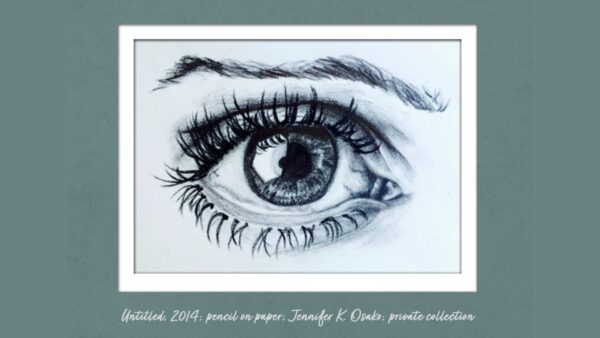This is the fifth edition of The 2 Susans, a monthly LinkedIn newsletter produced by Dr. Susan Baumgaertel and Dr. Susan Vogler.
We are two doctors who are curious about aging. Our newsletter embraces conversations about aging from many different perspectives—medical, psychological, societal and even personal. Of course we’ll have a lot of content that pertains to peri/menopause and beyond.
To read the July edition, click here. To read this new edition on LinkedIn, click here.
Enjoy the reprint below!
Vision Changes
Have you noticed vision changes as you age? Rhetorical question!
This month in The 2 Susans, we write about changing vision. You’ll get to read a story about my recent bout of anisocoria, and you’ll appreciate some helpful information about dry eyes.
Go grab your readers and enjoy!
Susan B:
Vision changes are not new to me. I’ve had myopia (nearsightedness) and astigmatism (irregularity of the cornea surface) since childhood, and they’ve gotten steadily worse over the years to the point where it’s almost a “badge of honor” getting my glasses prescription with the number –9.0 on it.
Little did I know back then that I’d be adding to my vision story as I aged into midlife. Yep, I now have readers everywhere—in my car, purse, office, computer desk, and in more than one room in my house.
Image my surprise a few months ago when I was brushing my teeth before bed and, while looking into the bathroom mirror, saw that my pupils were different sizes. It was not subtle!
Anisocoria is the term for unequal pupils. There is quite a long list of conditions that can cause anisocoria and most of them are not desirable: traumatic head injury, stroke, brain hemorrhage, severe glaucoma, medications, etc. I tried to go way back to medical school (almost 35 years ago) and recall the workup. I quickly realized this was one thing to just look-up as I hadn’t committed it to memory.
I saw my ophthalmologist who is about the same age as I am, and he had to look up the differential diagnosis too. He brought in a textbook with a very complicated flow diagram—it remined me of a poster my husband had at home depicting a complex algorithm for how to select a bottle of wine.
He quickly narrowed it down to the last two boxes on the diagram, and I had to get an Rx for pilocarpine from the pharmacy to complete the evaluation at a return visit. Verdict? I had a third cranial nerve palsy versus an Adie’s pupil. Next step was an MRI of my brain and brainstem, looking for tumor, mass, bleed, etc.—something that could cause damage to the cranial nerve on the affected side. My scan results: normal.
Sometimes, a little time needs to pass before a diagnosis can be clarified. In my case, the anisocoria gradually resolved over the next six weeks. No further assessment was needed.
Looking back, it’s still not clear why this happened. I jokingly chalk it up to aging, even though anyone can develop anisocoria. The most important thing was getting an ophthalmology evaluation.
After all, August is National Eye Exam Month!

Reproduced from “The Menopause Menu” by Susan J. Baumgaertel, MD (August 2023, myMDadvocate Press; page 130).
Susan V:
Seeing Clearly
Eyesight changes as we age, particularly during perimenopause and menopause. At mid-life, women begin to experience dry eyes. Dry eye syndrome, characterized by a lack of moisture and lubrication on the eye surface, affects the quality of life by causing discomfort, irritation, and vision problems if left untreated.
There are many causes and risk factors for dry eye syndrome, including older age, hormone changes, and the female sex. This condition can also occur due to certain diseases, some medications, and different climates.
Healthy tears rely on the interaction of the glands, eyelids, and the eye surface. In a normal functioning eye, one layer allows even spreading of the tear film, and then there’s another layer that provides a barrier to reduce evaporation of the tears. Dysfunction of any of these components can lead to dry eye syndrome.
Dry eyes are more prevalent in women, mainly during perimenopause and menopause. The changes and fluctuations in the balance of hormones, such as the declining estrogen levels, can affect the production of tears. As estrogen levels decline, the tear film becomes thinner and less stable, increasing the evaporation of the tears. Aging women often experience a gritty or sandy feeling in the eye, redness, irritation, and sensitivity to light. Blurry vision, trouble reading, and challenges driving are common complaints.
The discomfort associated with dry eye syndrome can diminish the quality of life, making it essential for menopausal women to seek appropriate treatments and eye care to maintain clear and comfortable vision during this transitional phase.
Initial treatment usually involves applying over-the-counter eye drops and lubricants and maintaining adequate hydration. Limiting screen time spent on digital devices may be beneficial. If symptoms persist, consultation with the ophthalmologist to discuss prescription medications, lacrimal duct plugs, surgery, and other medical treatments would be the best next step.
It is essential to have regular eye checks, especially during midlife. Early detection of eye diseases can make them easier to treat. Cataracts and glaucoma are more commonly associated with older women. Glaucoma is a severe condition and can cause permanent eye damage and loss of vision if left untreated.
Attaining a clear vision in our later years is rooted in accumulated wisdom. As we age, the connection between eye health, clear eyesight, and wisdom becomes increasingly evident. The knowledge we acquire in our youth aids us in viewing the future with greater clarity.
During our youth, we have clear vision, some of us need corrective eyeglasses, and most of us eventually need reading glasses in midlife. As time passes, our vision declines, and seeing is more challenging even with corrected glasses that continue to change as we age. But what we gain in return is the ability to see the world around us more clearly, and this reflects the wisdom gained in our younger years—the knowledge we acquire in our youth aids us in viewing the future with greater clarity.

The bright, vivid colors of these native plants are clearly visible from a block away. Photo taken by Dr. Susan Vogler while visiting Ponta Delgada, Sao Miguel.
🗓️ Our September edition will focus on the almighty thyroid and Thyroid Cancer Awareness Month.
📝💬 The 2 Susans would love to hear from you!
Let us know the aging topics YOU are curious about. Please also share this newsletter in your network and tag us—we are so grateful.
Susan B: susan@mymdadvocate.com
LinkedIn, myMDadvocate, MenopauseMenu, The Menopause Menu book
Susan V: susan@voglermedical.com
The 2 Susans newsletter is for informational purposes only. It does not represent medical advice and is not intended as a substitute for professional advice, diagnosis, or treatment. Always consult with your private physician.